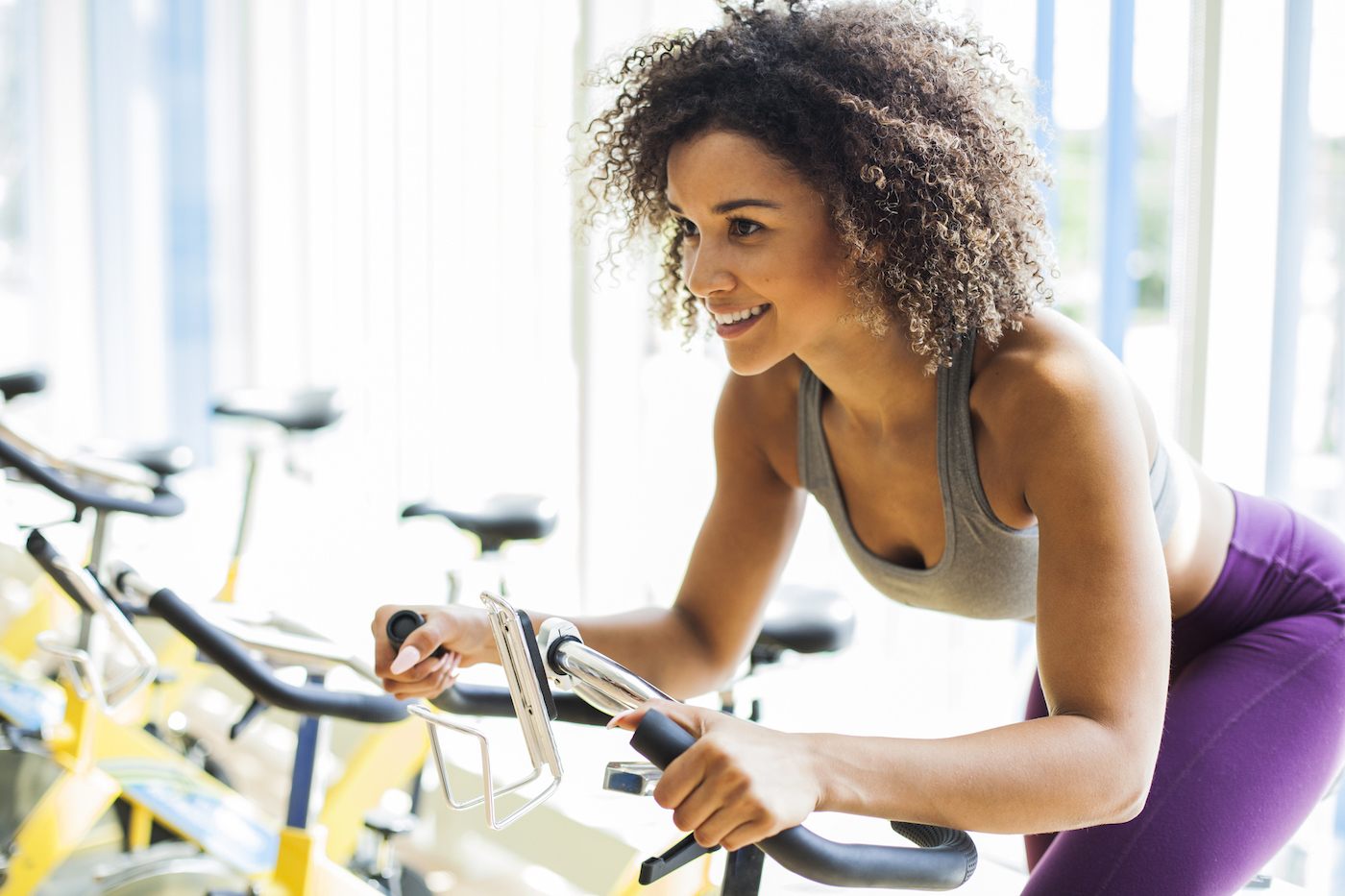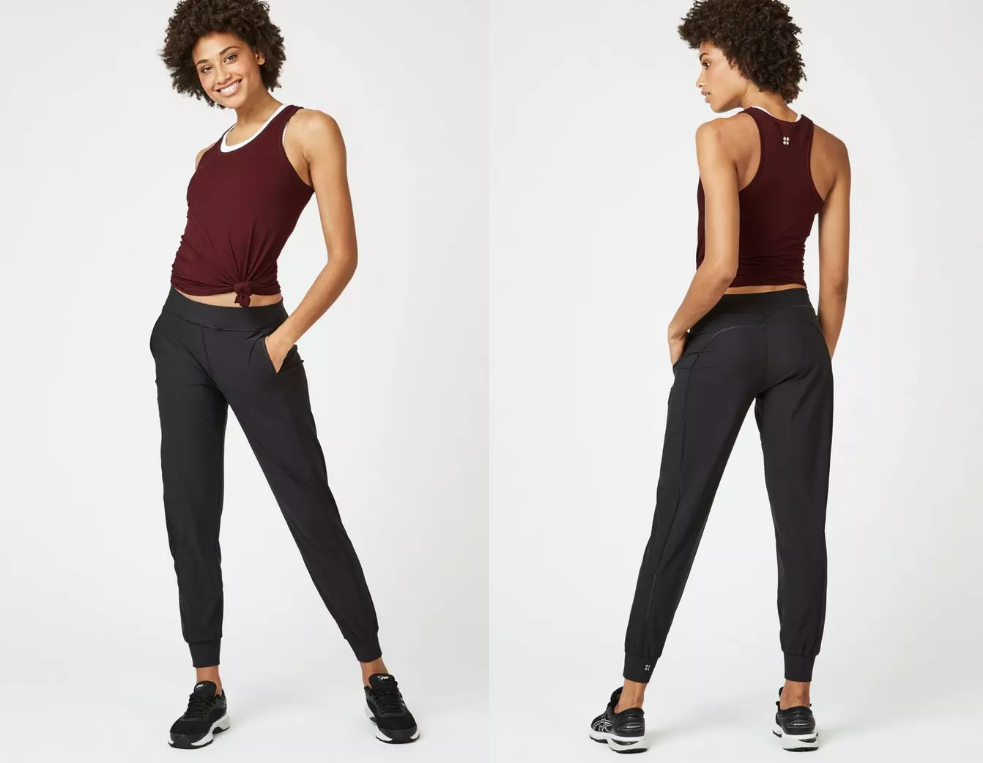
August 15, 2019 at 06:30AM by CWC
Although zillions of people are spinning class fanatics, there are two very common complaints I hear from those who attend workouts: 1) “Ouch, my butt is definitely going to be covered in bruises,” and 2) “My hips are tight AF.” While the former issue is one that typically goes away after you get used to the spin seat-butt relationship, the latter is one that tends to stay put—no matter how often you clip in.
When I asked my colleague (hi Erin!) whether she deals with tight hips as a regular cyclist, she put it bluntly: “Story of my life.” Physical therapists and fitness pros agree that it’s extremely normal (albeit not fun or comfortable). “Repetitive movements through a fixed range of motion in a compromised postural position—forward flexion—will cause the muscles on the front of your hip and thighs to become overworked and stiff relative to the muscles on the opposite ends,” explains Sean Kuechenmeister, certified athletic trainer with the New York Sports Science Lab, confirming this hip tightness happens with most cyclists.
Considering that spinning involves your body staying in the same position (minus your legs pedaling fast), it’s easy for the muscles to get tight and contracted. “The tightness in hip flexors comes from the fact that the body’s moving in the same plane of motion,” adds Erin Nelson, a cycling instructor at Swerve Fitness. So you’re recruiting the same major muscles in the same direction for roughly 45 minutes, which doesn’t leave much room for opening them up. “The muscles that connect to the pelvis get overworked and overused, and often they’re not properly stretched pre- or post-workout,” says Nelson. Here, the two experts share the best ways to avoid and deal with the annoying dilemma.
How to deal with tight hips from spinning
Stretch first thing: If you make an effort to stretch before you ride, it can really help with preventing that tightness. “Stretching before and after is the best way to help prevent tightness,” says Nelson. Her fave ones to do? A standard quad stretch (which is when you’re standing and bend one knee, bringing your foot to your butt), which lengthens the front side of your leg. “Another helpful stretch to loosen up the hips is a dropped lunge,” she says. So from standing, lunge forward with the right leg so the right knee’s over the ankle in a 90-degree bend. Then slowly lower the back left knee to the floor, and lean forward to stretch the left hip (and switch sides).
Foam roll on the reg: Sorry foam rolling haters, but it really helps. Kuechenmeister says you should do it regularly, too. “To reduce chronic tightness and hydrate stiff muscle tissue, regular foam rolling can be beneficial,” he says. And it doesn’t matter whether you roll pre or post training—either way will do the job.
ADVERTISEMENT
ADVERTISEMENTKate Spade Autumn/Winter Sale |
Cool down: After you get off that bike, it’s best to take some time to recover before going back into the real world. “It’s important to cool down and recover and stretch post-workout,” says Kuechenmeister. So stick around for that post-spin stretch that instructors tend to run through.
Check your seat: Sometimes the way your seat is positioned can lead to hip aches. “Make sure your seat is fitted properly,” says Kuechenmeister. He recommends having it line up with your hip when standing next to it. “When you’re seated, there should be a bend in your knee and elbows,” he says.
Stay active: As we’ve learned, tight hammies can come from merely sitting at your desk all day. Kuechenmeister says the same applies to your hips. “Try to limit the amount of time you spend sitting in your home and work life,” he advises, so maybe opt for that late afternoon stroll.
Strengthen your supplemental muscles: Having a strong peach, core, and hamstring muscles can actually offset hip tightness from cycling. “Because spinning involves a significant amount of time sitting, the glute muscles can become compressed,” says Kuechenmeister. Don’t sleep on your butt workouts or hamstring exercises, and remember that the core is central to everything we do. “The function of the rectus abdominis is to maintain pelvic position relative to the ribcage,” he says. “If the abs are weak, the hip flexors will stiffen up, pushing the pelvis forward.” And a forward tilted pelvis can lead to muscle patterns of stiffness and weakness that can lead to injury.
Cross train: Besides working the supplemental muscles, Nelson says it’s helpful to cross train. “Do other workouts that require other muscles of the hip—like HIIT, strength training, etc. as it will keep the muscles more balanced and healthy over time,” she says.
Another body part to watch? Your groin—here are some groin stretches to memorize. And this is a dynamic stretching routine to try pre- or post-workout.
ADVERTISEMENT
ADVERTISEMENTSports Direct Free Delivery on All Orders! |
Author Rachel Lapidos | Well and Good
Selected by CWC
ADVERTISEMENT
ADVERTISEMENTUp to 30% off Gift Sets |




